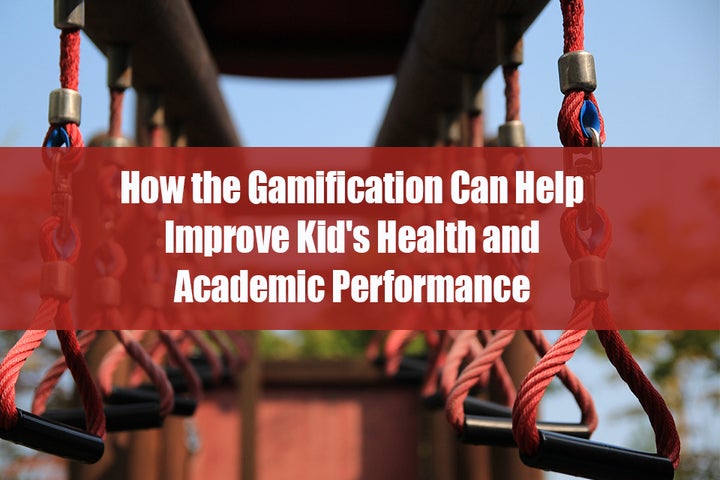
Can Gamification Get Kids Moving?
Gamification is the application of game design elements and game principles in non-game contexts. These elements have been integrated into everything from shopping to business to education and big companies love it.
There are a slew of companies that leverage gamification for business training, such as Treehouse, a virtual trainer for app development, programming, and business skills. The company tracks student performance and allocates points based on progress, providing the user with a strong sense of accomplishment.
Billionaire Andrew Mason, former CEO of Groupon, once said, “If I was building a character in a business video game and I had ten character points to distribute, I’d put three of them into intelligence and seven of them into self-discipline.”
Gamification is reaping productivity rewards in the workplace and entrepreneurs are finding ways to apply it to other fields as well. Education is an area that is in desperate need of creative solutions for keeping kids engaged and learning.
One company making headway in this space is GoNoodle, a company that develops videos that engage students in physical activities. With 10 million users in over 175 countries, GoNoodle’s monthly engagement rivals that of top kids digital media properties. I recently connected with Scott McQuigg, CEO and co-founder, to better understand the effects of gamification and movement for children:

CEO of GoNoodle, Scott Mcquigg
Q: What is the experience, opportunity or void you saw in children’s education?
McQuigg: This generation of kids is sedentary. They spend 7 hours of their waking day sitting. Despite a growing body of evidence that movement fuels brain power, schools are one of the most sedentary places in America. Homes overrun with screen time aren't much better. The lack of physical activity is a major factor in the rise of obesity, diabetes, and other chronic health conditions among kids. And, we know excessive inactivity impairs cognitive ability.
We believe kids are missing out on the fun of physical play and the many health and developmental benefits of physical activity. Teachers and parents know kids are their smartest, bravest, best selves when given lots of opportunities to move, but struggle to find a way that's engaging for kids. That is exactly why we built GoNoodle, to make it easy and fun for kids to be active in a way that impacts cognitive ability, fights the chronic effects of obesity, and restores joy and playfulness to exercise.
Q: You talk about ‘purposeful movement’, can you explain how this differs from a typical physical education class or recess play?
McQuigg: If you saw a class of kids running next to their desks or dancing in their classroom you might say ‘oh, that looks like fun.’ But the brain actually lights up differently after short bursts of movement. It improves focus, attention, productivity and has even been shown to improve math and reading comprehension scores.
The word 'purposeful' is to help adults understand what kids already know: they need to move, wiggle, dance, jump, run, and stretch. While it is fun, it is also big on purpose. Research continues to show that getting kids moving is one of the best things we can do for their cognitive health, not to mention the physical benefits we are all well-versed in.

GoNoodle Kids in Action!
Q: It would seem all parents want their kids to be healthy and active, but there are still millions of children hooked on screen time – what are some of the challenges you’ve faced in building this business and getting students / teachers / parents to adopt?
McQuigg: We know we can't fight screen time. This generation of kids is one that expects to be entertained. From the start, we knew that to be successful, GoNoodle had to be quirky and funny like the videos they watch on YouTube and the apps they play on tablets.
Instead of viewing screens as the enemy, GoNoodle sees them as new avenues for movement. And when you stop seeing the screen as the enemy, you remove a big barrier to engaging kids in physical activity. Who says watching a hilarious move-along video can't be exercise?
Q: In 3-5 years, how do you see physical activity playing a role in school curriculum?
McQuigg: Soon when you walk through the halls of schools, you'll be just as likely to hear music playing and feet stomping as you are to see students sitting quietly at desks. The P.E. and recess debates will be over, and kids will be given ample opportunities to play outside, exercise in gyms, and get moving inside the classroom with tools like GoNoodle. Flexible seating will be the norm, and students will feel freedom to move however they need. Educators and parents will understand that movement isn't a distraction from learning, it FUELS learning.
The movement revolution will continue at home where kids play movement games tied to what they are learning at school. Kids will invigorate their mornings with yoga stretches or cardio dance parties, showing up to school awake and ready to learn. Screen time and active time won't be viewed as opposites, and parents will view movement videos as their allies in helping kids release energy, have fun, and practice mindfulness.
